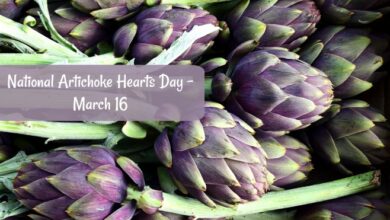Holi Festival History
Holi Festival History: Tracing the Vibrant Origins and Cultural Evolution
Discover the captivating journey of Holi Festival History, from ancient Hindu scriptures to modern global celebrations. Explore the significance, legends, and colorful traditions that have made Holi a symbol of unity, joy, and the triumph of good over evil.
Read also:
Introduction
Holi, also known as the Festival of Colors, is one of the most vibrant and exuberant festivals celebrated in India and around the world. Rooted in history, mythology, and culture, Holi signifies the triumph of good over evil and the arrival of spring. This article takes you on a journey through the history and evolution of this joyous occasion.
Ancient Origins
The origins of Holi can be traced back to ancient Hindu texts, including the Vedas and Puranas. References to a festival resembling Holi can be found in the scriptures, where celebrations marked the changing of seasons and agricultural cycles. This connection with nature continues to play a significant role in the modern celebration of Holi.
Legends and Mythology
Holi is enriched with fascinating legends that highlight the victory of good over evil. The story of Prahlada and Holika, found in the Bhagavata Purana, narrates how Prahlada’s devotion to Lord Vishnu saved him from the malicious intentions of his father’s sister, Holika. This legend underscores the festival’s theme of righteousness prevailing over wickedness.
Another well-known legend is that of Lord Krishna and Radha. Their playful and colorful interactions are believed to have inspired the tradition of playing with vibrant powders during Holi. Krishna’s mischievous spirit and his love for Radha have turned this festival into a joyful celebration of love and togetherness.
Significance and Cultural Diversity
Holi is not just a Hindu festival; it has transcended religious boundaries and is celebrated by various communities across the world. In Sikhism, Holi holds historical importance as it coincides with the festival of Hola Mohalla, celebrated by Sikhs to display martial arts and mock battles. Similarly, the Jains observe Holi to commemorate the enlightenment of Lord Mahavira.
The festival’s inclusivity and spirit of unity have made it a global phenomenon, with people of different cultures coming together to revel in the festivities. This showcases the power of Holi to promote harmony and camaraderie.
Holi Preparations and Rituals
The excitement leading up to Holi is palpable as communities engage in various preparations and rituals. Days before the festival, markets brim with vibrant powders, water guns, and traditional sweets. Homes are cleaned and decorated, signifying the triumph of purity over impurity.
Holika Dahan, also known as Chhoti Holi, involves lighting bonfires to symbolize the victory of good over evil. People gather around the fire, sing and dance, and seek blessings for prosperity and happiness.
Colors of Joy: Playing Holi
The main event of Holi is marked by the exuberant splashing of colors. People of all ages drench each other in hues of red, green, blue, and yellow, creating a mesmerizing spectacle. This tradition not only brings immense joy but also promotes social harmony by breaking down barriers of caste and creed.
Delectable Holi Delights
No festival is complete without indulging in delectable treats, and Holi is no exception. Gujiyas, a sweet dumpling filled with khoya and dry fruits, are a quintessential Holi delicacy. Bhang, a cannabis-infused drink, is also consumed in moderation during the festival, adding an element of fun and relaxation to the celebrations.
Modern Celebrations and Global Impact
In the modern era, Holi has taken on new dimensions. From lively music festivals to cultural events, the essence of Holi has found expression in diverse forms. Major cities around the world host grand Holi events, attracting people of various backgrounds to partake in the revelry.
FAQs about Holi Festival History
Q: What is the history behind the Holi festival?
A: The history of Holi dates back to ancient Hindu texts, where it was associated with the changing of seasons and agricultural cycles.
Q: How is Holi celebrated in different cultures?
A: Holi is celebrated by various communities, including Sikhs and Jains, with each adding their unique cultural elements to the festivities.
Q: What is the significance of the bonfire lighting during Holika Dahan?
A: The bonfire lighting symbolizes the victory of good over evil and is a precursor to the colorful celebrations of Holi.
Q: How does Holi promote unity and harmony?
A: Holi brings people of different backgrounds together, breaking down social barriers through the shared joy of playing with colors.
Q: Why is Lord Krishna associated with Holi celebrations?
A: Lord Krishna’s playful interactions with colors, particularly with Radha, have inspired the tradition of playing with colors during Holi.
Q: Are there any traditional sweets associated with Holi?
A: Yes, gujiyas, sweet dumplings filled with khoya and dry fruits, are a popular Holi delicacy.
Q: How has Holi evolved in the modern era?
A: Modern Holi celebrations include music festivals, cultural events, and global participation, expanding the festival’s reach and impact.
Q: What is the global significance of Holi?
A: Holi’s message of unity and celebration has transcended borders, making it a global festival that promotes harmony and togetherness.
Q: How does Holi reflect cultural diversity?
A: Holi’s inclusive spirit is evident as people from various cultures and backgrounds come together to celebrate its colorful festivities.
Q: What role does Holi play in promoting joy and happiness?
A: Holi is a celebration of joy, where the act of playing with colors and indulging in festivities brings happiness to people’s lives.
Conclusion: Holi Festival History
Holi, the Festival of Colors, is a mesmerizing blend of history, mythology, and cultural diversity. From its ancient origins rooted in Hindu scriptures to its modern global celebrations, Holi stands as a testament to unity, joy, and the triumph of good over evil. As people come together to immerse themselves in vibrant hues, they not only celebrate the festival but also embrace the values it represents – unity, inclusivity, and boundless happiness.



